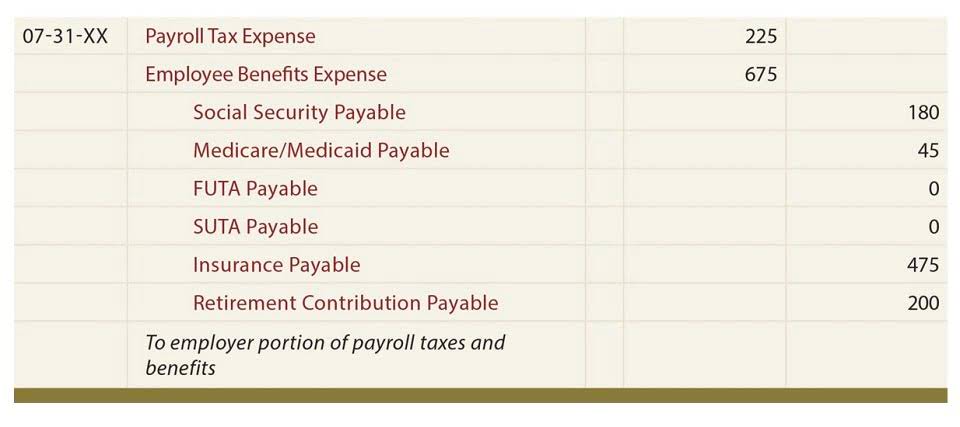
When insurance is due for each quarter, i.e., $2,000 will be subtracted from the prepaid account and is shown as an expense in the income statement for that reporting quarter. However, the rights to these future benefits or services rarely last more than two or three years. Thus, out of the $1,500, $900 worth of supplies have been used and $600 remain unused. Our writing and editorial staff are a team of experts holding advanced financial designations and have written for most major financial media publications. Our work has been directly cited by organizations including Entrepreneur, Business Insider, Investopedia, Forbes, CNBC, and many others. Finance Strategists is a leading financial education organization that connects people with financial professionals, priding itself on providing accurate and reliable financial information to millions of readers each year.

Prepayment Accounting
Generally, Prepaid Insurance is a current asset account that has a debit balance. The debit balance indicates the amount that remains prepaid as of the date of the balance sheet. Once the journal entry for prepaid expenses has been posted they are then arranged appropriately in the final accounts. Prepaid expenses (a.k.a. prepayments) represent payments made for expenses which have not yet been incurred or used. In other words, these are “advanced payments” by a company for supplies, rent, utilities and others, that are still to be consumed.
- The reason as to why Prepaid Insurance is treated as a Current Asset is primarily because of the fact that the benefits against prepaid insurance are supposed to be utilized within a shorter timeline.
- However, under the new lease accounting pronouncements, the guidance eliminates recognizing prepaid assets on the balance sheet related to leases exceeding a total lease term of 12 months.
- In particular, the GAAP matching principle requires accrual accounting, which stipulates that revenue and expenses must be reported in the period that the spending occurs, not when cash or money exchanges hands.
- The company will record the payment with a debit of $12,000 to Prepaid Insurance and a credit of $12,000 to Cash.
Prepaid Expenses FAQs
- We then divide the $2,000 over the 24 months of the subscription term to arrive at a monthly subscription cost of $83.33, to be recognized on the income statement each month the subscription is utilized.
- Once the journal entry for prepaid expenses has been posted they are then arranged appropriately in the final accounts.
- Take note that the amount has not yet been incurred, thus it is proper to record it as an asset.
- It is important to consider what basis of accounting an organization is operating under when assessing how to account for prepaid expenses.
- This is done with an adjusting entry at the end of each accounting period (e.g. monthly).
- Prepaid insurance is essentially a part of the insurance premium or a fee that is paid by the company in advance as a part of the insurance agreement for an extended period of time.
If consumed over multiple periods, there may be a series of corresponding charges to expense. The quick ratio, while also being a liquidity ratio, only factors in an organization’s most liquid assets such as cash and cash equivalents that can be converted the quickest, hence the same. The quick ratio is calculated by dividing cash, or an organization’s most liquid assets such as cash equivalents, marketable securities, and accounts receivable by its current liabilities. As a result of not being a cash equivalent or highly liquid, prepaid expenses do not impact the quick ratio. The amortization schedule has a column for the total cash payment made at the beginning of the subscription term of $2,000.
What is the difference between prepaid assets and deferred revenue?
Meanwhile, some companies pay taxes before they are due, such as an estimated tax payment based on what might come due in the future. One of the more common forms of prepaid expenses is insurance, which is usually paid in advance. Prepaid expenses are payments for goods or services that will be received in the future. These expenses are not initially recorded on a company’s income statement for the period when the money changes hands. Hence, it is important to record actual expenses for the year, so that the correct amount of profit is calculated. A prepaid expense is an expenditure paid for in one accounting period, but for prepaid insurance journal entry which the underlying asset will not be consumed until a future period.

The amount of the insurance premiums that remain prepaid at the end of each accounting period are reported in the current asset account, Prepaid Insurance. The balance in this account will be combined with the balances in https://www.facebook.com/BooksTimeInc/ other prepaid expense accounts and will be listed on the balance sheet as prepaid expenses. A business buys one year of general liability insurance in advance, for $12,000. The initial entry is a debit of $12,000 to the prepaid insurance (asset) account, and a credit of $12,000 to the cash (asset) account.
- In this scenario, we would record a prepaid asset at the beginning of the contract and the expense of the subscription would be realized over the course of the year.
- Anything that is owed by, or owed to the organization is subsequently declared in the Balance Sheet.
- Interest paid in advance may arise as a company makes a payment ahead of the due date.
- 11 Financial’s website is limited to the dissemination of general information pertaining to its advisory services, together with access to additional investment-related information, publications, and links.
- Similarly, the treatment of prepaid (as well as accrued) insurance is also similar to that of prepaid (and accrued) expenses.
- Organizations typically use a prepaid expense ledger to monitor the total amount of money spent on prepayments, when payments are due, and when they will be received.

At the end of each month, an adjusting entry of $400 will be recorded to debit Insurance Expense and credit Prepaid Insurance. Leases can be a great example of situations where a contract may require a lessee to pay a portion of their obligation prior to or at lease commencement. These types of stipulations are generally observed in real estate leases where the landlord typically requires https://www.bookstime.com/bookkeeping-services/dallas one or two months of the monthly rent obligation upon execution of the contract or at lease commencement.
